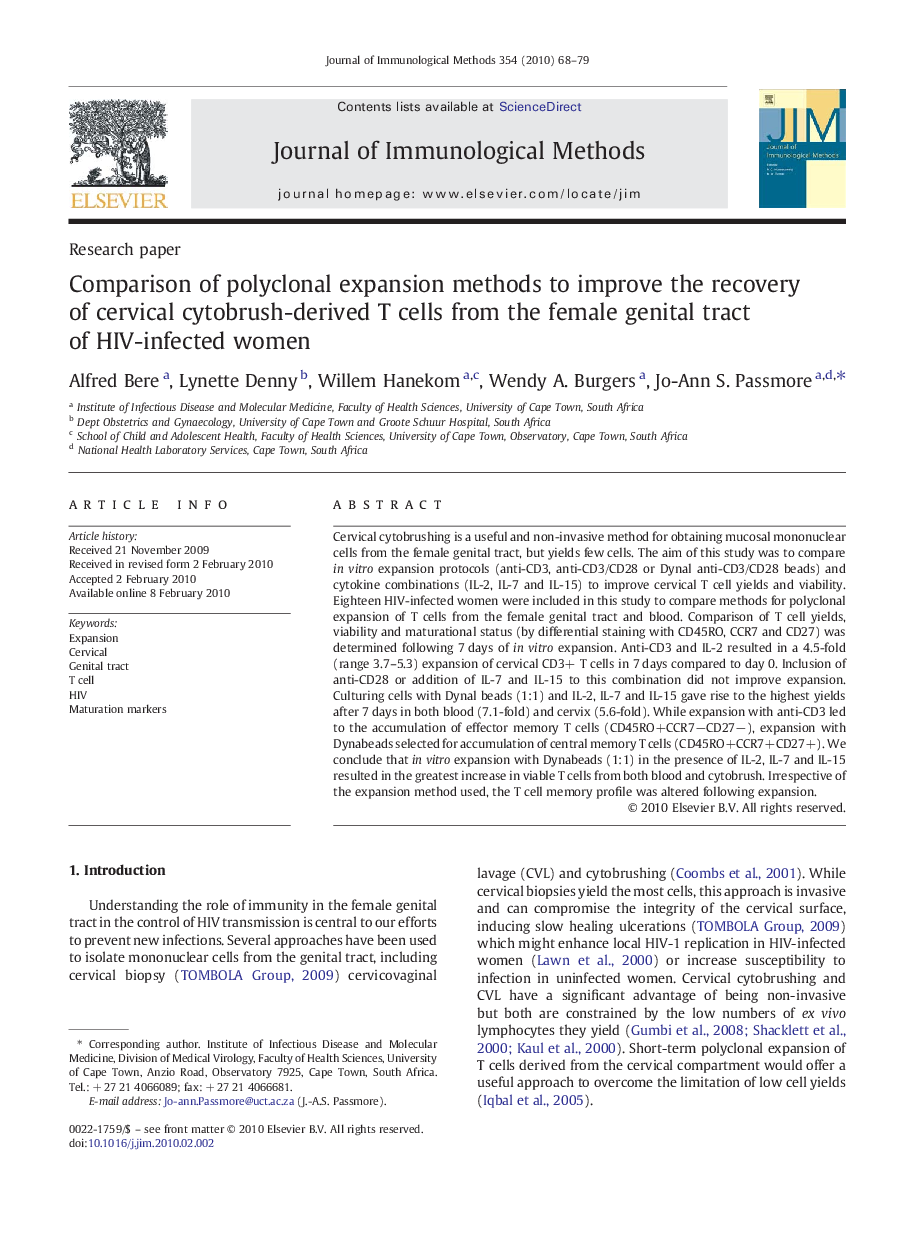| Article ID | Journal | Published Year | Pages | File Type |
|---|---|---|---|---|
| 8419789 | Journal of Immunological Methods | 2010 | 12 Pages |
Abstract
Cervical cytobrushing is a useful and non-invasive method for obtaining mucosal mononuclear cells from the female genital tract, but yields few cells. The aim of this study was to compare in vitro expansion protocols (anti-CD3, anti-CD3/CD28 or Dynal anti-CD3/CD28 beads) and cytokine combinations (IL-2, IL-7 and IL-15) to improve cervical T cell yields and viability. Eighteen HIV-infected women were included in this study to compare methods for polyclonal expansion of T cells from the female genital tract and blood. Comparison of T cell yields, viability and maturational status (by differential staining with CD45RO, CCR7 and CD27) was determined following 7Â days of in vitro expansion. Anti-CD3 and IL-2 resulted in a 4.5-fold (range 3.7-5.3) expansion of cervical CD3+ T cells in 7Â days compared to day 0. Inclusion of anti-CD28 or addition of IL-7 and IL-15 to this combination did not improve expansion. Culturing cells with Dynal beads (1:1) and IL-2, IL-7 and IL-15 gave rise to the highest yields after 7Â days in both blood (7.1-fold) and cervix (5.6-fold). While expansion with anti-CD3 led to the accumulation of effector memory T cells (CD45RO+CCR7âCD27â), expansion with Dynabeads selected for accumulation of central memory T cells (CD45RO+CCR7+CD27+). We conclude that in vitro expansion with Dynabeads (1:1) in the presence of IL-2, IL-7 and IL-15 resulted in the greatest increase in viable T cells from both blood and cytobrush. Irrespective of the expansion method used, the T cell memory profile was altered following expansion.
Related Topics
Life Sciences
Biochemistry, Genetics and Molecular Biology
Biotechnology
Authors
Alfred Bere, Lynette Denny, Willem Hanekom, Wendy A. Burgers, Jo-Ann S. Passmore,
